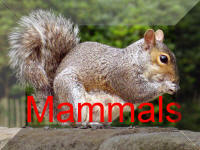Roe Deer Capreolus capreolus Back To

Description:
These are Small deer, reddish brown in summer, grey in winter.Distinctive black moustache stripe, white chin. Appears tail-less with white/cream rump patch which is especially conspicuous when its hairs are puffed out when the deer is alarmed. Males have short antlers, erect with no more than three points.Height: Average height at shoulder 60-70cm. Males larger than females.Weight: Adults 18-29kg
Ecology:
Roe deer are widespread throughout Scotland and much of England and in many areas they are abundant. They are increasing their range but are not established in most of the Midlands.They are generally found in open mixed, coniferous or purely deciduous woodland, usually solitary or in small groups of male, female and young. Larger groups may feed together in winter. Roe are seasonally territorial, from April to August. Young females usually establish ranges close to their mothers; juvenile males are forced to disperse further afield.
Roe deer feed throughout the day , but are most active at dusk and dawn. Their diet is varied and includes buds and leaves of deciduous trees and shrubs, bramble, rose, ivy, herbs, conifers, ferns, heather and grasses.
Breeding season, known as the rut, is from mid-July to the end of August. During the Rut agressive males defend their teritory. Behaviour includes barking, chasing, often in circles, fraying (rubbing antlers up and down tree bark) and scent marking young trees. They fight other males by locking antlers and pushing and twisting; occasionally one or both may die.
Whilst the egg is fertilised at the time of mating it does not begin to develop inside the female's uterus until several months later. The roe deer is the only hoofed animal in which this delayed implantation occurs. Females give birth, usually to twins, but sometimes to single kids or triplets, between mid-May and mid-June. The young suck within a few hours of birth. The Young fauns are left alone, lying still amongst vegetation. Their coat, dappled for about the first six weeks, helps to camouflage them. If there are twins they are left separately. By 6-8 weeks fawns usually accompany their mother. Roe will begin to feed on vegetation at 3-4 weeks and are weaned at 3-4 months but will continue to take milk from the mother into the winter. Males and females reach sexual maturity and will mate at 14 months.
Lifespan
14 years max , but most die before 8 years. They are controlled by man: many thousands are culled annually. There is some predation of kids by foxes and in Scotland also by golden eagles. Many are injured or killed in traffic accidents.
Conservation:
Roe deer have been hunted from prehistoric times. They became extinct in most of England during the 18th century and populations were re-established by reintroductions in the 19th century. Pre 1960 they were treated as "vermin" because of damage to forestry, agriculture and horticulture.Since the 1970s there has been an increased interest in exploitation of Roe as a game species and for meat. As a result they are now covered by various Acts of Parliament which relate to close seasons, when deer may not be hunted, firearm restrictions, conservation, welfare and poaching controls.
Questions:
Do males keep their antlers throughout the year?
No. Antlers are cast from late October to early January. A new pair begins to grow straight away. They are covered in furry "velvet" (skin which supplies blood to the growing antler bone) and are fully grown by March. Velvet is shed from April onwards.What do I do if I find a young kid apparently abandoned?
Leave it alone and go away from the area; it is part of the normal behaviour for the mother to leave her kids concealed while she goes off to feed. She will return to them later if they are left undisturbed and no-one is nearby.Where can I watch Roe deer?
Unlike other species of deer in Britain, roe are not kept in deer parks so to watch them you have to go to their wild habitats. Ask the advice of local naturalists, natural history societies, the county Wildlife Trust or a local museum. Many roe habitats have public access (Forestry Commission woodlands) but on private land permission is required from the owner.
Deer are Protected Species

